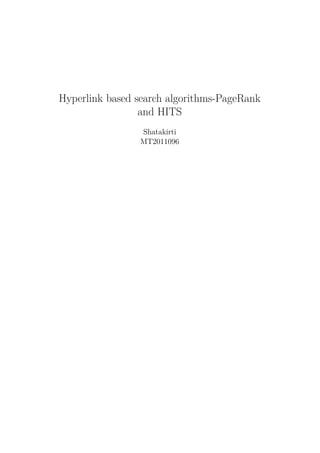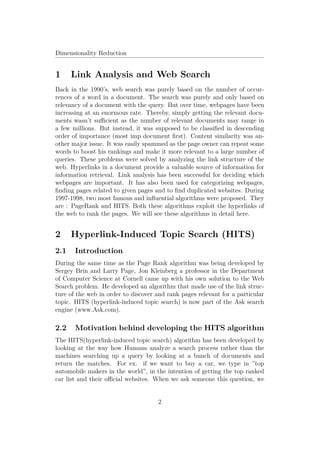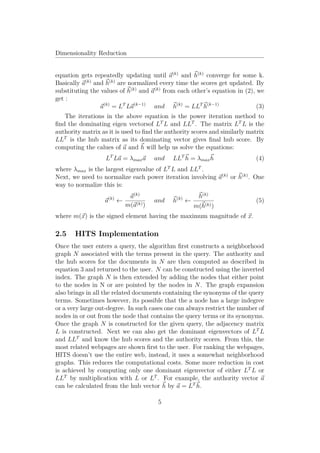The document discusses two important algorithms for web search - HITS and PageRank.
HITS (Hyperlink-Induced Topic Search) was developed by Jon Kleinberg to find authoritative pages on a topic by identifying hubs and authorities. Hubs are pages that point to many authorities on a topic, while authorities are pages that are pointed to by many hubs. The HITS algorithm calculates authority and hub scores through an iterative process until they converge.
PageRank, developed by Brin and Page at Google, ranks pages based on the premise that more important pages are likely to receive more links from other important pages. It defines importance or rank as a page's likelihood of being reached by a random surfing model












![Dimensionality Reduction
Figure 5: Link-Farms
3. Something that is of course also very efficient to raise your own PageR-
ank, is ’buying’ a link on a page with high PageRank. However, Google
has publicly warned webmasters that if they are discovered to do any
of the two above, their links might be ignored in the future, or they
might even be taken out of Google’s index.
References
[1] ”The Anatomy of a Large-Scale Hypertextual Web Search Engine” by
Sergey Brin and Lawrence Page
[2] ”Google Page Rank-Algorithms for Data Base Systems (Fachseminar)”
by David Degen - May 12, 2007
[3] ”Link Analysis in Web Information Retrieval” by Monika Henzinger ;
Google Incorporated, Mountain View, California
[4] ”Understanding Search Engines-Mathematical Modeling and Text Re-
trieval” by Micheal W.Berry and Murray Browne
[5] en.wikipedia.org/wiki/PageRank
[6] en.wikipedia.org/wiki/HITS_algorithm
12](https://image.slidesharecdn.com/pagerankandhits-121023012531-phpapp02/85/Pagerank-and-hits-13-320.jpg)